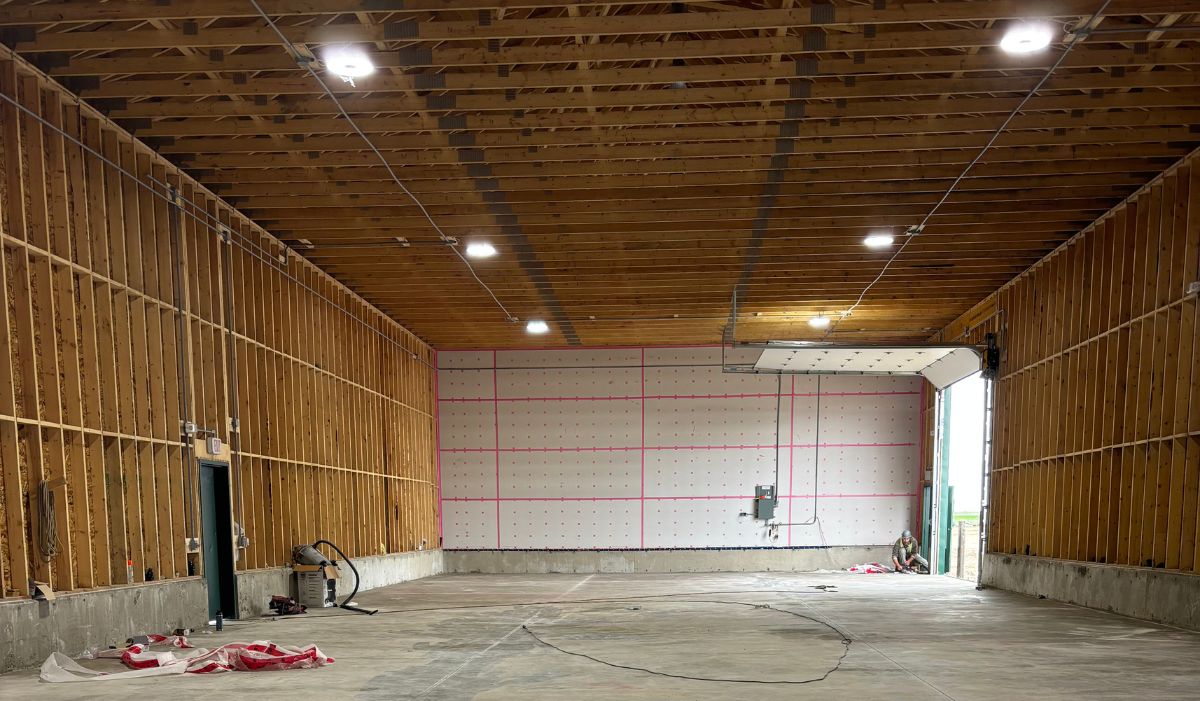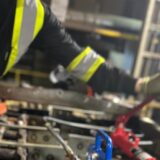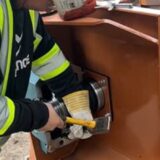How Guardrails Help Prevent Falls in Structural and Scaffold Work
Construction sites, especially those involving elevated surfaces like steel structures and scaffolding, come with a high risk of falls. Among all the safety systems designed to prevent such accidents, guardrails stand out as one of the most effective. Simple in design but essential in function, guardrails create a physical barrier between workers and potential hazards—allowing them to move more freely and confidently while staying safe.
In this post, we explore how guardrails help prevent falls in both structural and scaffold work, highlight key regulatory standards, and outline best practices for implementation on industrial construction sites.
Why Guardrails Are Crucial in Construction Safety
Falls are the leading cause of serious injury on construction sites. When workers are operating at heights, especially during steel installation or scaffolding, guardrails provide a first line of defense. Unlike fall arrest systems, which activate after a fall begins, guardrails prevent the fall from happening at all.
Guardrails not only protect workers—they reduce the need for bulky fall arrest gear, making tasks safer and more efficient. This aligns with the guidance from the Saskatchewan Construction Safety Association (SCSA), which states that employers must eliminate or reduce fall risks wherever possible—and guardrails are often the best way to do this.
Guardrails in Structural Steel Work
In structural steel work, workers often move across beams or platforms several metres above the ground. Guardrails are used to:
- Mark safe boundaries on work surfaces
- Prevent falls from temporary platforms or walkways
- Allow workers to operate without the limitations of personal fall arrest equipment
According to the SCSA, guardrails are required where workers may fall three metres or more—or even less if injury is likely. That means structural projects need guardrails at multiple stages, especially during steel framing or decking installation.
Guardrails and Scaffold Safety Requirements
Scaffolding presents unique fall hazards. Workers frequently climb, shift materials, and perform tasks on narrow walkways. That’s why scaffold guardrails are mandatory above specific height thresholds.
The Saskatchewan OHS Regulations require that scaffold guardrails:
- Be between 920 mm and 1070 mm high from the working surface
- Include a mid-rail midway between the top rail and platform
- Have vertical members spaced no more than 2.4 metres apart
- Be strong enough to support a falling worker
For external building perimeters, wire rope guardrails are allowed under specific conditions. These systems must include:
- A horizontal top and mid-rail made from rope at least 9.5 mm in diameter
- Vertical members at least 5.0 cm wide, spaced properly
- Setup that ensures a worker can’t fall through upon contact
Toe Boards: A Supporting Safety Feature
Another element that enhances the safety of guardrails is the toeboard. Often overlooked, toeboards are essential when there is a risk of materials falling from the platform.
Toeboards are required when:
- Objects could fall more than 1.2 metres from permanent surfaces
- Materials could drop more than 3 metres from temporary scaffolds or platforms
According to regulation, a toeboard must extend at least 125 mm above the working surface and act as a low barrier at the base of the guardrail system.
When and Where to Install Guardrails
Construction employers are responsible for assessing the site and determining where guardrails are required. According to SCSA guidance, guardrails must be installed in areas where:
- The fall height is 3 metres or more
- A fall from less than 3 metres could still cause serious injury
- Scaffolds, open platforms, or elevated walkways are being used
Temporary and permanent work areas alike require protection. Proper planning at the design stage of a project ensures that guardrails are factored in early—reducing last-minute risks and keeping teams compliant.
Benefits of Guardrails for Workers and Employers
Implementing guardrails isn’t just about compliance—it’s about creating a safety-first culture. Some clear benefits include:
- Preventing injuries and fatalities
- Reducing insurance costs and workplace incident rates
- Improving worker confidence on elevated tasks
- Minimizing the need for complex fall arrest setups
- Simplifying site supervision and inspection
Additionally, visible safety features like guardrails reinforce company values and signal to clients that safety is a top priority.
Credence Construction Ltd’s Commitment to Fall Protection
At Credence Construction Ltd, we understand the importance of safeguarding every aspect of a job site—especially when working at height. Whether it’s during scaffolding, steel fabrication, or platform-based tasks, we follow best practices for installing and inspecting guardrails as part of our broader fall protection systems.
We train our teams in accordance with SCSA guidelines and go beyond the basic requirements to ensure every worker returns home safely.
Conclusion
Guardrails are more than a regulatory requirement—they’re a proven safety solution that prevents falls before they happen. For construction environments involving structural steel or scaffold work, the proper installation of guardrails protects lives, supports efficiency, and builds a foundation of trust on every project.
Whether you’re overseeing a new industrial build or coordinating a maintenance shutdown, make guardrails part of your plan. They’re simple, effective, and essential.
Need expert support for your next construction project? Contact Credence Construction Ltd for solutions that prioritize safety, efficiency, and compliance.



